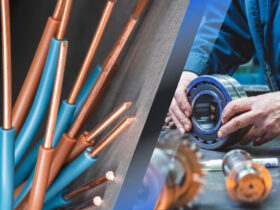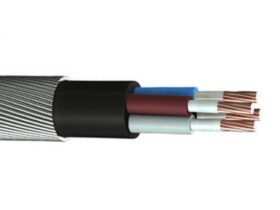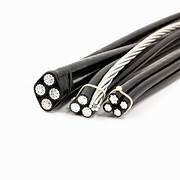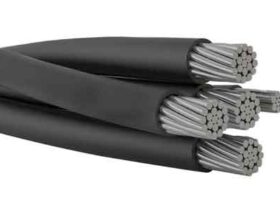Introduction Aerial Bundled Cable (ABC) has gained popularity in the field of power distribution due to its numerous advantages over traditional bare conductor systems. This article aims to provide a comprehensive overview of the specifications of aerial bundled cables, including conductor materials, insulation properties, voltage and current ratings, sizes and configurations, weather resistance, fire performance, mechanical strength, and installation requirements.
- Conductor Materials and Types Aerial bundled cables consist of multiple conductors that are typically made of aluminum or copper. Aluminum conductors are lightweight, cost-effective, and have good conductivity, making them the most common choice. Copper conductors offer higher conductivity but are more expensive. The conductors can be solid or stranded, depending on the application requirements.
- Insulation Materials The insulation of aerial bundled cables is crucial for electrical safety and performance. The most commonly used insulation materials are cross-linked polyethylene (XLPE) and high-density polyethylene (HDPE). XLPE provides excellent electrical properties, thermal resistance, and durability. HDPE is known for its superior resistance to environmental factors such as sunlight, moisture, and temperature variations.
- Voltage Ratings Aerial bundled cables are designed to meet various voltage requirements. Common voltage ratings for ABC include low voltage (LV) up to 1 kV, medium voltage (MV) between 1 kV and 36 kV, and high voltage (HV) above 36 kV. The specific voltage rating depends on the application and local regulations.
- Current Ratings The current-carrying capacity of aerial bundled cables depends on factors such as conductor size, insulation properties, and installation conditions. Manufacturers provide current rating tables based on standard installation scenarios to ensure safe and efficient power transmission.
- Temperature Ratings Aerial bundled cables are designed to withstand different temperature conditions. The maximum operating temperature is typically specified to ensure the cable’s longevity and performance. Common temperature ratings include 70°C, 90°C, and 105°C, depending on the insulation material used.
- Sizes and Configurations Aerial bundled cables are available in various sizes and configurations to accommodate different power distribution requirements. The cross-sectional area of the conductors determines the cable’s current-carrying capacity. The number of conductors in a cable depends on the specific application, with configurations ranging from two-core to multiple-core designs.
- Weather Resistance Aerial bundled cables are designed to withstand harsh weather conditions, including exposure to sunlight, rain, wind, and ice. The insulation materials and cable construction provide resistance against UV radiation, moisture ingress, and temperature fluctuations, ensuring reliable performance in outdoor installations.
- Fire Performance Fire safety is a critical consideration for power distribution systems. Aerial bundled cables are designed to have excellent fire resistance properties. They are typically manufactured with fire-resistant insulation materials that minimize the spread of flames and emit low levels of smoke and toxic gases.
- Mechanical Strength and Durability Aerial bundled cables must possess sufficient mechanical strength and durability to withstand the installation process, including tensioning and sag requirements. The cables are engineered to resist mechanical stresses such as pulling forces, bending, and impacts, ensuring long-term reliability and performance.
- Installation Requirements and Recommendations Proper installation is vital for the effective operation of aerial bundled cables. Manufacturers provide detailed installation guidelines that cover aspects such as sag and tension calculations, mounting methods, clearance requirements, handling and storage procedures, safety measures, and inspection and testing protocols.
Conclusion Aerial bundled cables offer a range of specifications tailored to meet the diverse needs of power distribution systems. The choice of conductor materials, insulation types, voltage and current ratings, sizes and configurations, weather resistance, fire performance, and mechanical strength ensures reliable and efficient power transmission in various












Leave a Reply